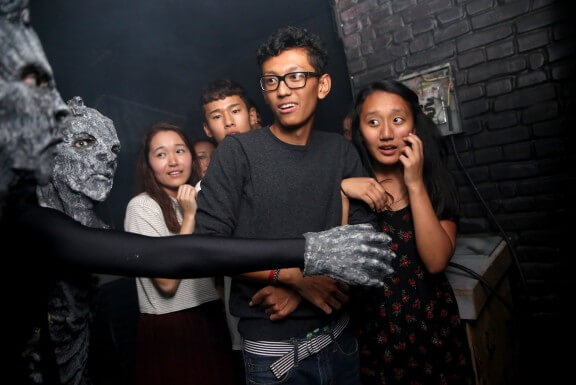 Shane Salerno delved deep into unknown parts of J.D. Salinger’s life.
Shane Salerno delved deep into unknown parts of J.D. Salinger’s life.
Credit: Getty Images
Like many who toil in Hollywood, Shane Salerno had a passion project on the side. While writing for “NYPD Blue” and getting credits on the likes of “Armageddon” (he’s also James Cameron’s co-writer on one of the “Avatar” sequels), Salerno labored hard on a look into the unknown (or at least underknown) private life of the most famously private writer of all: J.D. Salinger. The fruits of his labors are now available, namely a documentary and a 700-page book, both called simply “Salinger.” (And for the record, his favorite Salinger works are the “Nine Stories” members “A Perfect Day for Bananafish” and “For Esmé — With Love and Squalor.”)
Was this always intended to be a non-fiction project?
Initially I wanted to make it as a feature with Daniel Day-Lewis playing Salinger. But I knew how fanatical he was about research. Over the course of all this research I realized it’s a documentary. The people I needed to talk to were in their 80s and 90s — this had to go now. And I just started filing them. About six months into the documentary I realized there was no way this story could be told only as a two hour film. That’s when the book became important.
Do you view the movie as a gateway attraction for the book, which is bigger and more comprehensive than the two hour film?
I view them as one combined project. They work independently of each other. The book has a ton of material the film doesn’t have, and the film has a ton of things the book just can’t do — specific cinematic things. The book is about his life and has an enormous amount on his work. The film is about his life with a psychological portrait of his work.
Were some of the people hard to convince to take part?
Sure. In the case of Jean Miller — this was a woman who was 14 when she met Salinger, 19 when their relationship ended, who had a hundred letters from him and had never told her story anywhere. Not only did she talk to us, she gave us all of Salinger’s letters to her. They start in ’49 and go all the way to 1954, when she’s in college, and he’s sending her telegrams saying can you come up this weekend. These letters provided this unprecedented look at Salinger.
Did Miller require a lot of coaxing?
I wouldn’t say coaxing. She wanted to make sure this was a serious endeavor, and one that would tell her story and Salinger’s story honestly. She definitely put us through a hardcore vetting process.
Ultimately how did you wind up convincing her?
I think it was just time. At that point we were eight years in, seven years in, and she had seen the work. And remember if we wanted to do something cheap and exploitve we would have slapped this thing out in 2010, right after he passed away. We had a done film, ready to go when he passed away. There was a lot of pressure to do that. I just knew there was this other material. Because we waited we got things like the only photo of him writing during the war.
Has anything cropped up since you’ve locked down the film and the book?
I got this amazing letter a week ago that Salinger wrote to someone in Germany. It says “It isn’t true at all that I hate or dislike all films, and it’s always more than a little off-putting, not to say irritating, to hear that I do. The fact is I like certain kinds of films inordinately, and even own a 16mm sound projector and a few old prints.” He goes on to disprove one of the myths about him: that he hated movies. On page two of “The Catcher in the Rye,” he says he hates movies.
Were there other myths you wanted to debunk?
That he was a recluse. There was nothing reclusive about J.D. Salinger. Howard Hughes was a recluse. Recluses don’t call The New York Times and grant spontaneous interviews. They don’t see a 17 year old girl on the cover of The New York Times Magazine and want to meet her and pursue her. That’s another contradiction — he took his picture off of “The Catcher in the Rye.” That’s what I was most interested in — those contradictions.

















